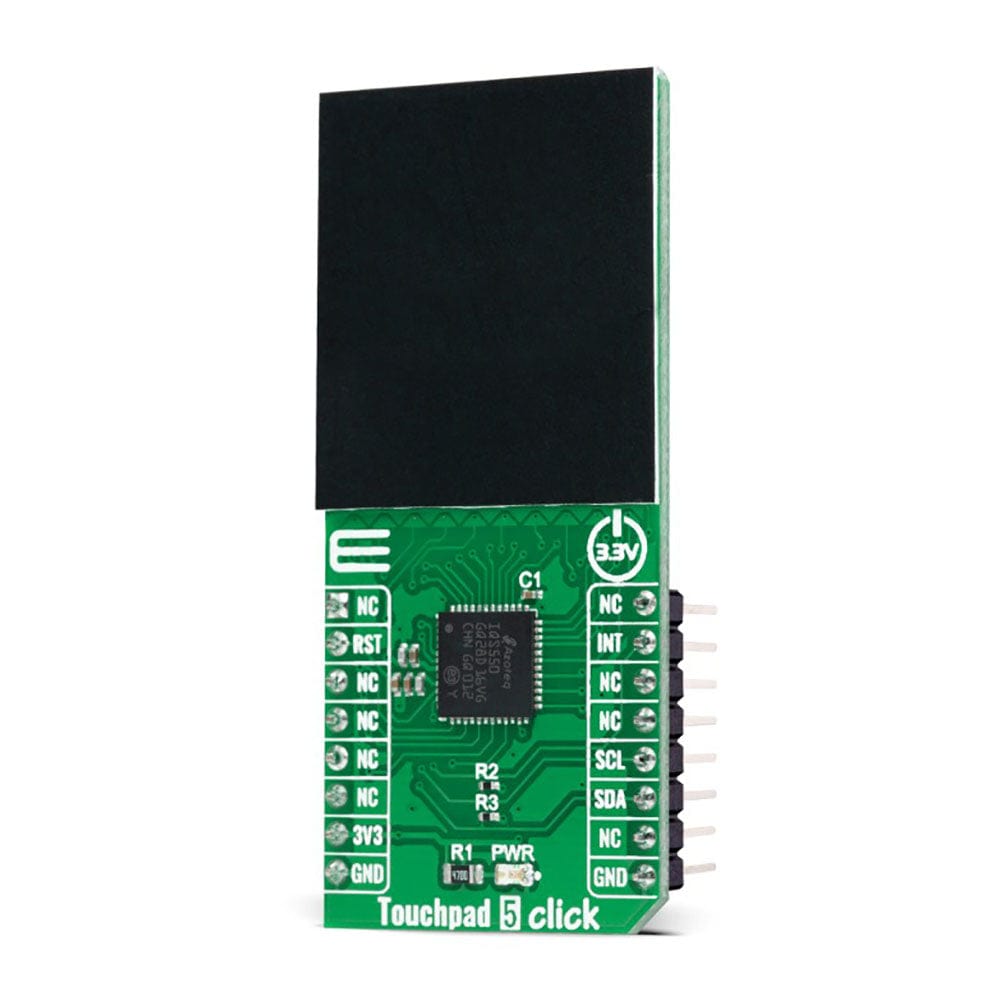
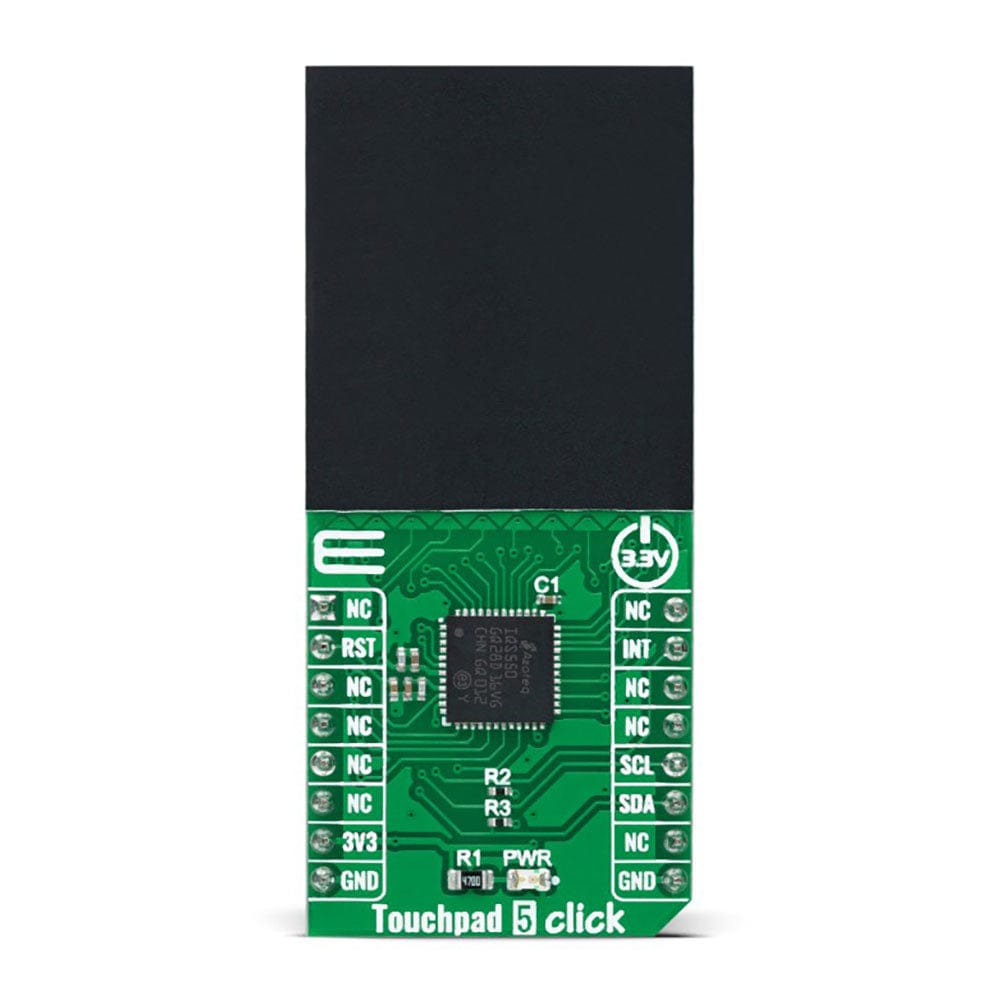
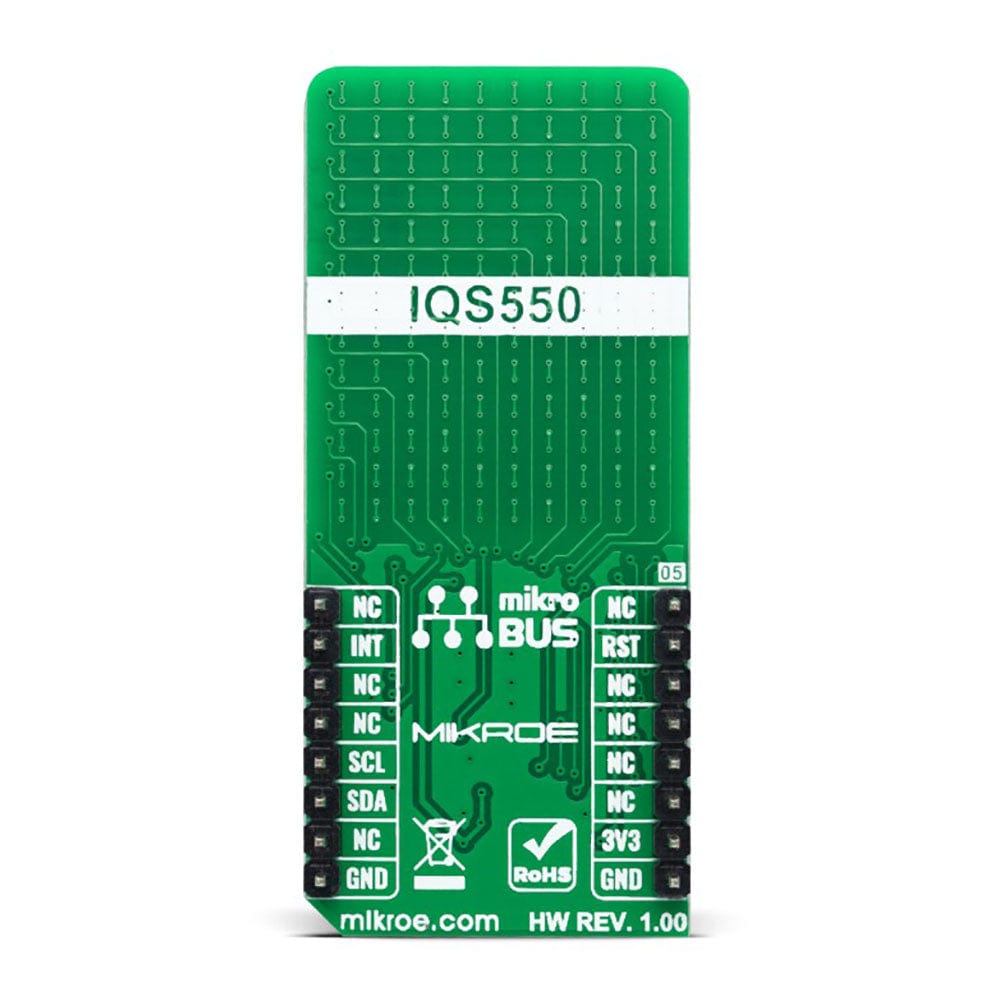
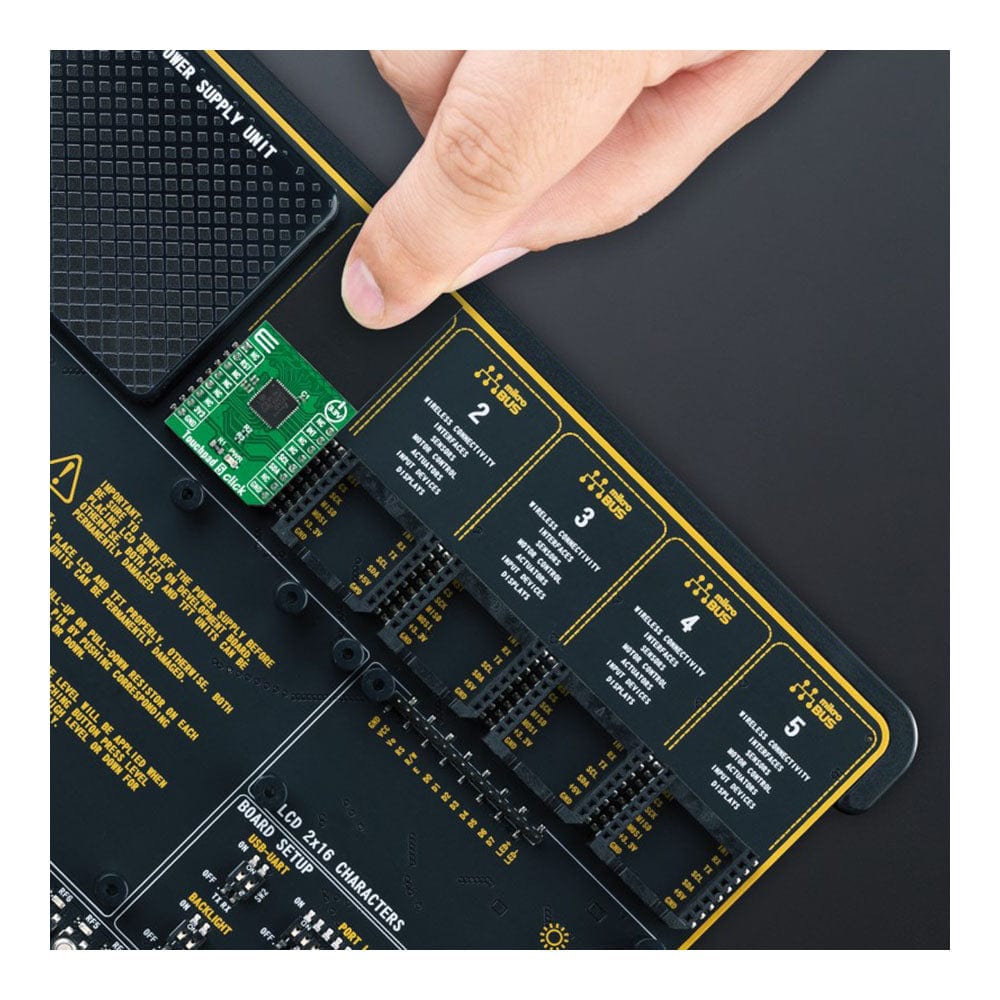
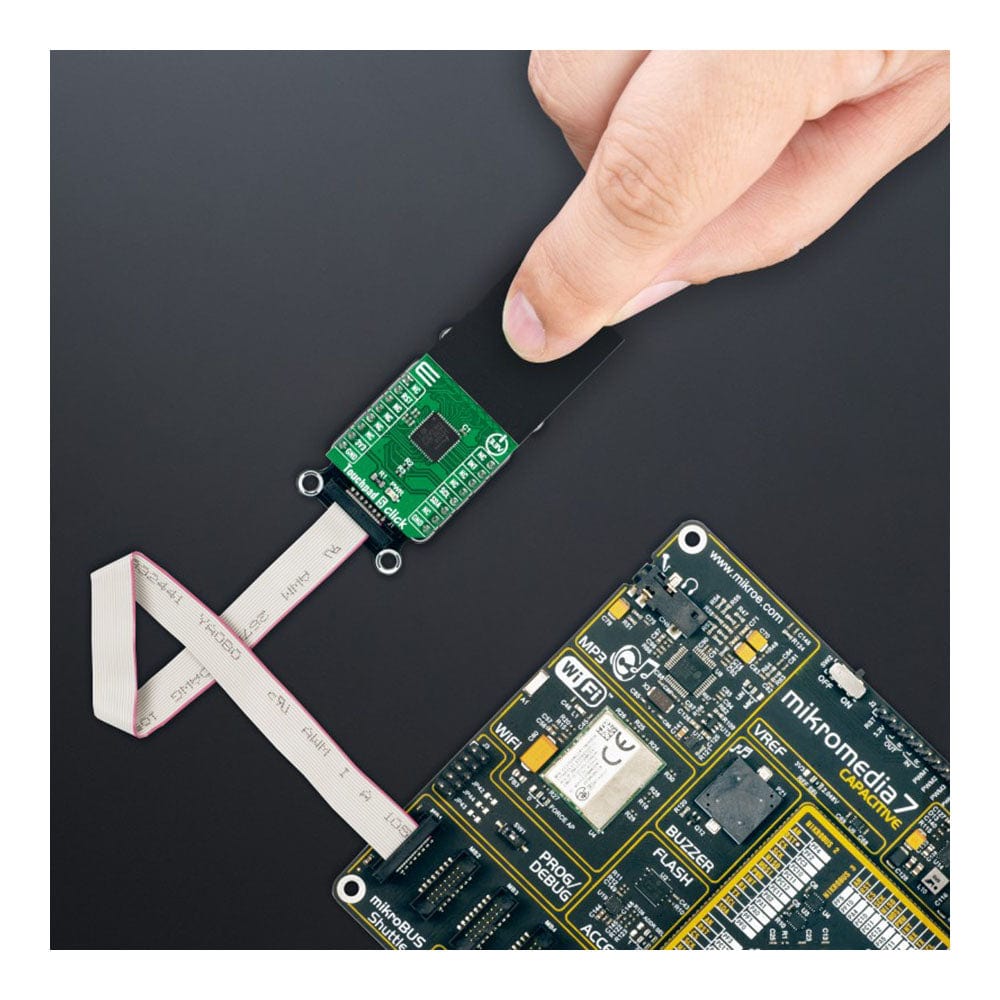
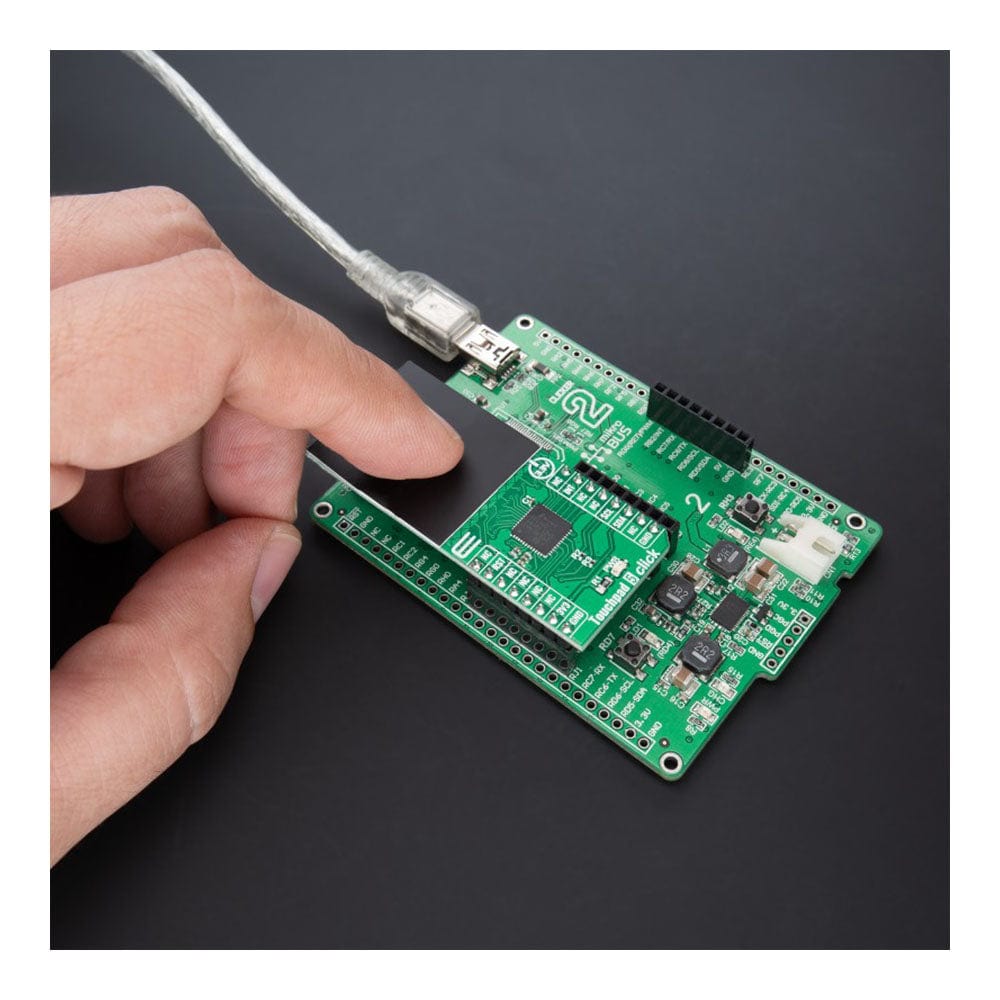
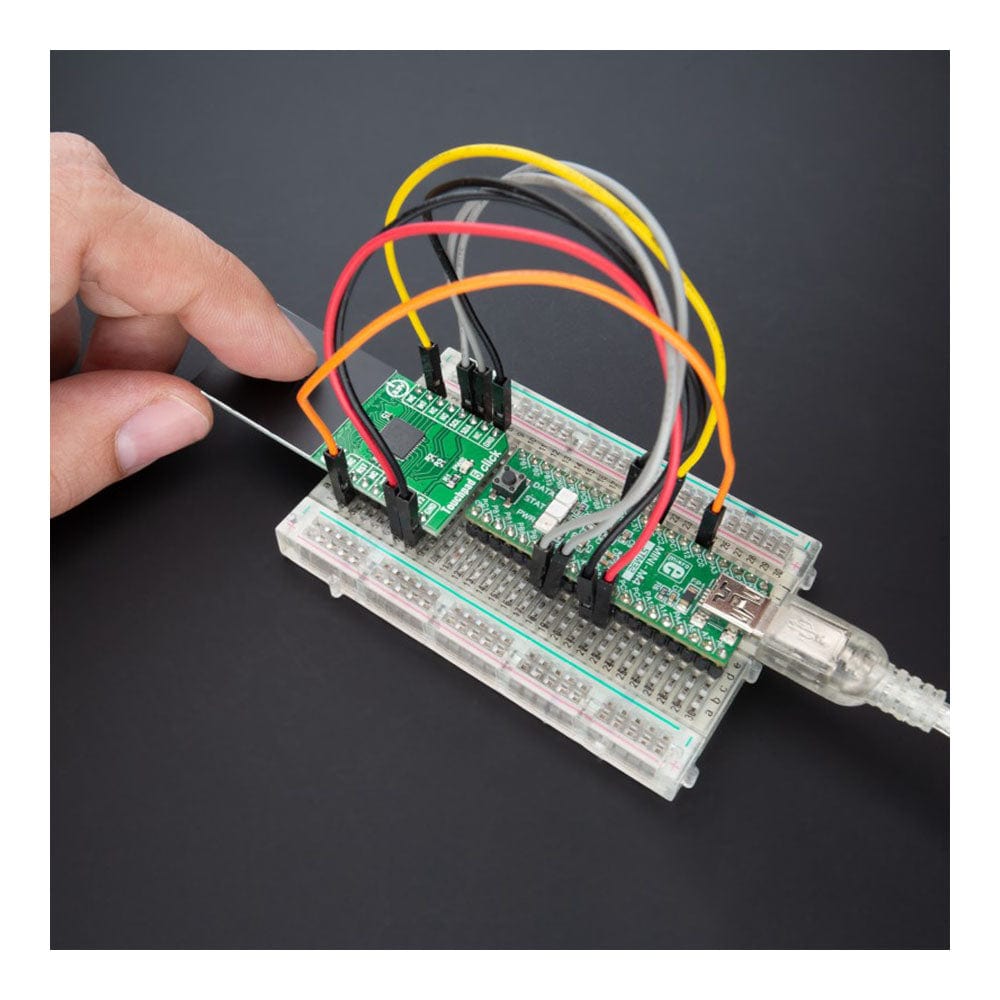
Key Features
Overview
The TouchPad 5 Click Board™ is a compact add-on board that easily integrates projected capacitive touch into users' applications. This board features the IQS550, a projected capacitive touch and proximity trackpad/touchscreen controller from Azoteq. Its low power proximity detection allows a low power operation offering a complete touchscreen sensing solution with a 29x23mm trackpad dimension, best-in-class sensitivity, and power consumption. It is characterized by embedded gesture engine recognition for simple gestures (touch and snap on each channel, single- and multi-finger gestures) and built-in noise detection and filtering. This Click board™ is suitable for human-machine interfaces, capacitive keyboards, gesture-based interfaces, remote control trackpads, and more.
The TouchPad 5 Click Board™ is supported by a mikroSDK compliant library, which includes functions that simplify software development. This Click board™ comes as a fully tested product, ready to be used on a system equipped with the mikroBUS™ socket.
Downloads
Das TouchPad 5 Click Board™ ist eine kompakte Zusatzplatine, die projizierte kapazitive Berührungen problemlos in Benutzeranwendungen integriert. Diese Platine verfügt über den IQS550, einen projizierten kapazitiven Touch- und Proximity-Trackpad/Touchscreen-Controller von Azoteq. Seine stromsparende Näherungserkennung ermöglicht einen stromsparenden Betrieb und bietet eine komplette Touchscreen-Sensorlösung mit einer Trackpad-Abmessung von 29 x 23 mm, erstklassiger Empfindlichkeit und Stromverbrauch. Es zeichnet sich durch eine integrierte Gesten-Engine-Erkennung für einfache Gesten (Berühren und Einrasten auf jedem Kanal, Einzel- und Mehrfingergesten) und integrierte Rauscherkennung und -filterung aus. Dieses Click Board™ eignet sich für Mensch-Maschine-Schnittstellen, kapazitive Tastaturen, gestenbasierte Schnittstellen, ferngesteuerte Trackpads und mehr.
Das TouchPad 5 Click Board™ wird von einer mikroSDK-kompatiblen Bibliothek unterstützt, die Funktionen enthält, die die Softwareentwicklung vereinfachen. Dieses Click Board™ wird als vollständig getestetes Produkt geliefert und ist bereit für den Einsatz auf einem System, das mit der mikroBUS™-Buchse ausgestattet ist.
| General Information | |
|---|---|
Part Number (SKU) |
MIKROE-5199
|
Manufacturer |
|
| Physical and Mechanical | |
Weight |
0.02 kg
|
| Other | |
Country of Origin |
|
HS Code Customs Tariff code
|
|
EAN |
8606027388309
|
Warranty |
|
Frequently Asked Questions
Have a Question?
Be the first to ask a question about this.







